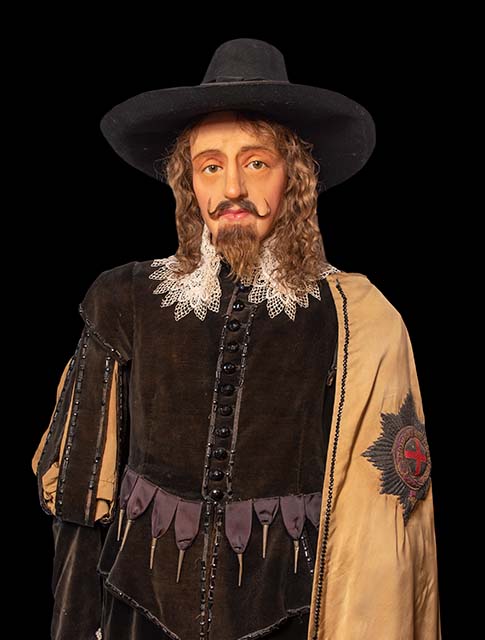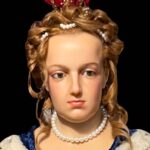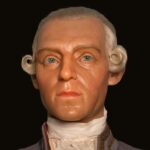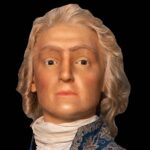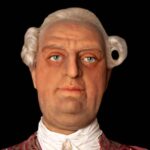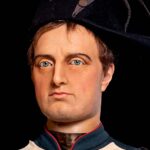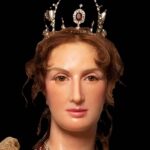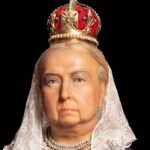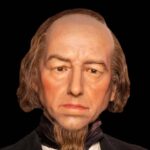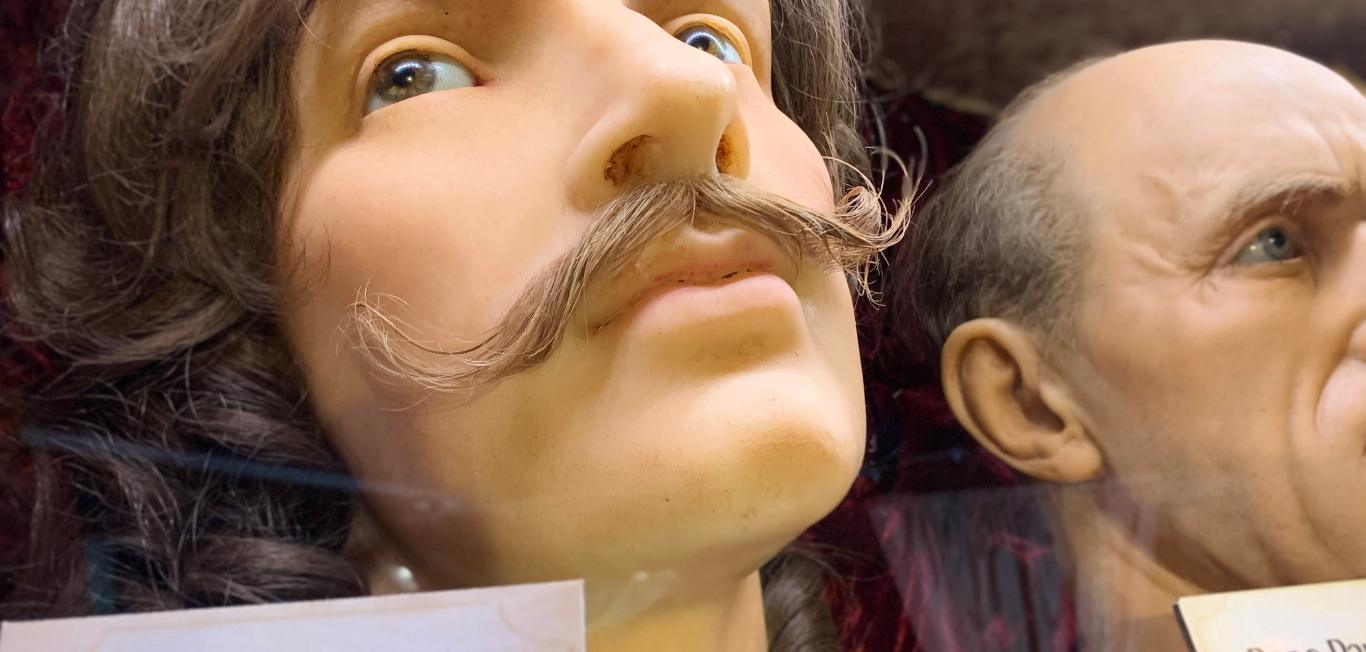King Charles I was the second son of James VI of Scotland and Anne of Denmark. He was born on November 19, 1600, in Fife, Scotland. By the age of five, he was bestowed the titles Duke of York and Knight of the Bath. After the death of Elizabeth I in 1603, Charles I’s father, James, ascended to the throne of England and Ireland.
Charles I’s succession was made possible by the untimely death of his older brother, Henry, in 1612. His biography documents his reign as a turbulent time in England due to his disagreements with Parliament. From 1625 to 1629, King Charles I dissolved Parliament three times, officially dismissing it in 1629 and governing the monarchy independently.
Tensions continued to rise during Charles I’s attempt to arrest five members of Parliament. By August 1642, he raised the royal standard at Nottingham, officially inciting the English Civil War. King Charles I commanded the Royalists but was defeated by Parliament’s alliance with the Scots and the formation of the New Model Army.
DID YOU KNOW?
King Charles I dissolved Parliament three times.
Charles I would not accept defeat and continued his conflict with Parliament, ultimately causing his beheading in January 1649 for treason. The execution of King Charles I was a defining moment in English history, marking the end of his reign and the beginning of the Commonwealth era.
Early Years of Charles I
Charles I of England was born on November 19, 1600, in Dunfermline Castle in Fife, Scotland. He was the second son of King James VI of Scotland and Anne of Denmark. On December 13, 1600, Charles I was designated Duke of Albany, continuing the tradition for the second son of a Scottish king. In March 1603, Charles I’s father, King James VI, ascended to the English throne. His parents and older siblings moved to England, leaving a young, vulnerable, and sick Charles I behind, out of fear he would not survive the trip.
By mid-1604, Charles I was declared strong enough to endure the journey from Scotland to England, where he would spend the majority of his life. He continued to overcome physical ailments, including a speech impediment, though this did not prevent him from his next appointment as Duke of York and Knight of the Bath in 1605. Charles I’s early education was overseen by Thomas Murray, who guided him in languages, mathematics, classics, and religion.
With every year, Charles I’s physical impediments lessened, and he grew to be a skilled horseman and marksman and developed a passion for hunting and fencing. His older brother, Henry, died in 1612, launching 12-year-old Charles I into the role of heir apparent, making him next in the line of succession. Overnight, he was appointed the titles of Duke of Cornwall and Duke of Rothesay, which established him as the oldest surviving son of the sovereign. In November 1616, Charles I received more honors and was named Prince of Wales and Earl of Chester, paving the path for his future reign.
Personal Life and Legacy of Charles I
Charles I of England, the second son of James VI, was born on November 19, 1600, and ascended to the throne in a riotous era. Outside of his political engagements, he was a supporter of the arts, with a strong interest in painting and architecture. Throughout his reign, he commissioned numerous works, leaving a permanent mark on the cultural landscape of the time.
In 1625, King Charles I married the French Princess Henrietta Maria, a poignant event in his personal life. The beginning of their marriage was challenging due to disagreements. Although they had early marital disputes, their union would become a crucial facet through the events of Charles I’s reign.
King Charles I of England’s legacy was overshadowed after the Second English Civil War. His reputation was tarnished by the accusation of high treason in addition to other crimes against England. His trial resulted in a guilty verdict and a death sentence. On January 30, 1649, King Charles I was beheaded outside of the Banqueting House in Whitehall, London. His execution marked a momentous occasion in the annals of English history.
DID YOU KNOW?
King Charles I was beheaded outside of the Banqueting House in Whitehall, London.
Interesting Facts About Charles I
Charles I of England was born in Scotland.
In 1625, Charles I ascended to the throne.
King Charles I was absent from his wedding ceremony.
Charles I had three heirs, two English kings, and one princess royal.
King Charles I’s disagreements with Parliament triggered the English Civil War.
Charles I was executed for treason. In fact, he was the only English king who was ever executed for treason.
King Charles I had a passion for the arts and an impressive art collection.
For 11 years, Charles I ruled England without Parliament.
To pay for his lifestyle, King Charles I introduced more taxes.
What Is King Charles I Most Known and/or Famous For?
From 1625 to 1649, King Charles I reigned over Great Britain (England and Scotland) and Ireland. He served as the leader of the Royal Forces and faced daunting opposition from Parliamentary forces, led by Oliver Cromwell. His monarchy is renowned for being a boisterous era of conflicts with Parliament, with their clash eventually leading to the disastrous English Civil War in 1649. The conflict between the Royal and Parliamentary forces created a pivotal shift and transformed the political landscape of England.
Unfortunately, the Parliamentary forces defeated King Charles I and the Royal Forces. Rather than leaving a legacy as a great ruler, King Charles I of England is best known for his post-English Civil War execution for high treason on January 30, 1649. His demise marked the end of the monarchy and made way for the Commonwealth period. Historians have studied and debated the significance of Charles I’s death for decades, as it is an integral part of the past and future of English history.
Execution of Charles I
The execution of King Charles I of England was a momentous occasion in the annals of English history, as his demise was a tragic consequence of the political defeat that would define his reign. King Charles I was accused of high treason and faced trial before the High Court of Justice, comprised of 68 members. The trial began on January 20, 1649, in Westminster Hall, and his verdict was announced six days later. On January 26, 59 members of the High Court signed his verdict as guilty and sentenced him to death by execution.
On January 30, 1649, King Charles I was beheaded in a somber event in front of the Banqueting House in London. He was interred at St. George’s Chapel of Windsor Castle in Berkshire on February 7, 1649, near King Henry VIII. Following his death, England was declared a republic by the House of Commons, and Oliver Cromwell, who led the Parliamentary forces, was appointed Lord Protector until his death in 1658. Two years later, in 1660, Charles I’s son, Charles II, restored the Stuart kingdom.
The Accession and Reign of Charles I
Charles I succeeded King James in 1624, embarking on a difficult reign that encountered frequent political strife. The early years of his reign were comprised of conflicts with Parliament and aggravation by wars with France and Spain. These trials resulted in discontent between King Charles I and his subjects.
Between 1625 and 1629, King Charles I dissolved Parliament three times, asserting an authoritarian stance and opting for solitary rule. His non-parliamentary revenue-raising measure continued to diminish his favorability. Financial needs for wars and disputes led to the gathering of Parliament in 1640.
DID YOU KNOW?
The early years of King Charles I were comprised of conflicts with Parliament and aggravation by wars...
By 1641, an Irish uprising escalated tensions. King Charles I’s attempt to arrest five parliamentarians set off the English Civil War in 1642. The English Civil War had two phases: the first was from 1642 to 1646 and the second from 1648 to 1649. Both of these phases had the same outcome — the defeat of the king’s supporters. The war’s chain reaction put Charles I on trial for treason, marking his downfall and the onset of significant historical transformations in England.
The Death of Charles I
On January 30, 1649, in front of the Banqueting House in Whitehall, London, King Charles I was executed. This marked a pivotal moment, establishing the end of the English Civil War and inaugurating the Commonwealth period. After King Charles I’s beheading, his body was embalmed and laid to rest in St. George’s Chapel at Windsor Castle. Charles I was later exhumed and reinterred in the same vault as Henry VIII in St. George’s Chapel.
After King Charles I’s death, he became a symbol for the Royalist cause and was viewed as a martyr who struggled against tyranny by his supporters. His reign inspired books, plays, and works of art, keeping alive his legacy. To this day, King Charles I is discussed among scholars and is a hot topic in debates. The life and death of King Charles I were pivotal moments in the annals of English history.
FAQs
What is Charles I of England known for?
King Charles I of England is known for his continuous conflicts with Parliament, eventually leading to the English Civil War and his consequential beheading in 1649.
What was Charles I’s early life like?
Charles I’s early life was consumed with ailments, royal titles bestowed on him, and becoming the next heir to the throne due to his brother’s death in 1612.
How did Charles I become king of Great Britain and Ireland?
Charles I became king of Great Britain and Ireland through the line of succession. Charles I became the next heir upon the death of his older brother.
What was the relationship between Charles I and Parliament like?
Charles I and Parliament had a very tumultuous relationship. He eventually diminished Parliament and began ruling independently.
Why was Charles I executed?
Charles I was executed for treason due to dissolving Parliament and creating new taxes to support his lifestyle.
